Virgin vs. Recycled Polyester Staple Fiber: Which One Truly Delivers for Today’s Textile Needs?
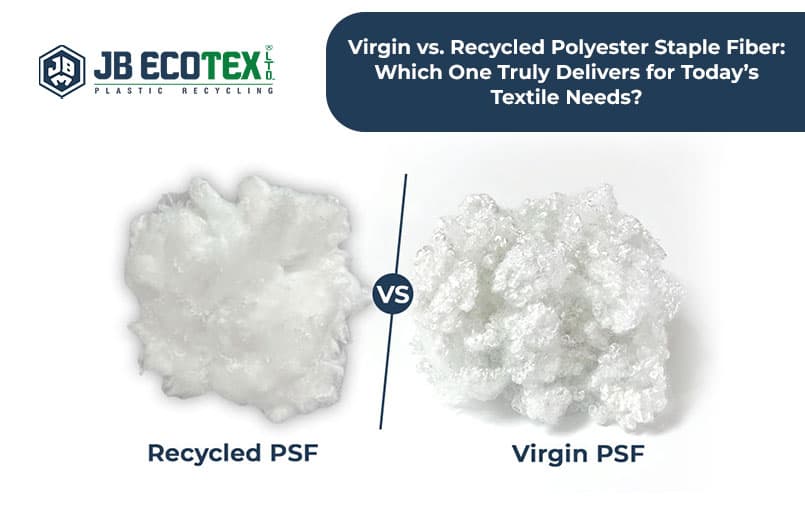
Brands used to focus on making high-quality products and pushing them into the market. Today, there is a shift. A deeper focus on sustainability, on how a product is made, where it comes from, and what happens after it’s used.
Consumers care about more than just quality. They care about how their choices impact the planet. Brands know this, and that’s why the shift toward more sustainable materials in the textile industry is accelerating. The debate around virgin polyester staple fiber and recycled polyester staple fiber (RPSF) is at the heart of this change.
What does this shift mean for manufacturers? Is recycled polyester staple fiber the solution? Or does virgin polyester still have its place? Let’s explore how these two options compare in today’s textile landscape.
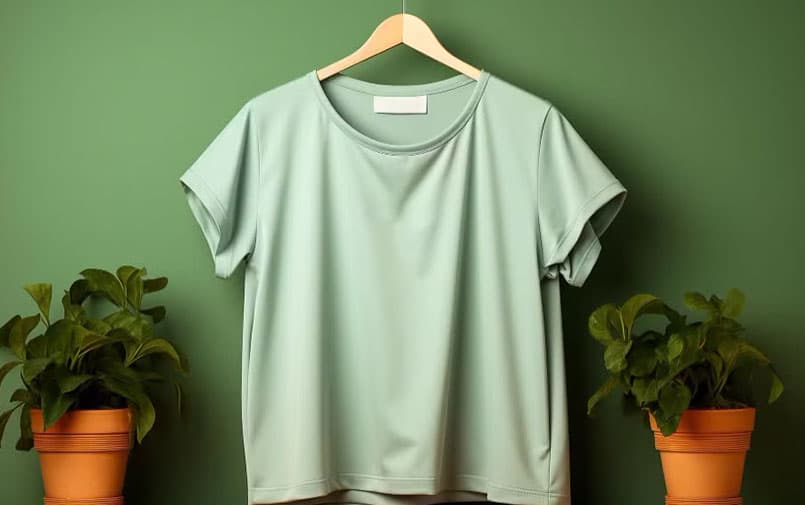
Sustainability is Changing the Game
In the past, using virgin polyester staple fiber was simply the standard. Today, more manufacturers are realising the value of sustainability, not just in terms of materials but in the broader environmental context.
The world is becoming more eco-conscious. Brands are listening to consumers who want to make a difference. And that’s why recycled polyester staple fibre is gaining momentum. More companies are starting to make the switch, moving away from virgin polyester fiber to more sustainable options.
RPSF is more than just an environmentally friendly choice. It allows manufacturers to align with consumer demand for eco-friendly materials and reduced plastic waste.
In places like India, the PET recycling industry has become an essential part of the supply chain. It’s no longer a niche. It’s a growing, mainstream practice that helps close the loop on plastic waste. Manufacturers looking to meet Extended Producer Responsibility (EPR) goals and sustainability standards are turning to RPSF.
Introduction to the Textile Industry’s Shift Toward Sustainability
The textile industry has always been a place of innovation. But recently, sustainability has become the driving force behind this transformation. As global consumers demand greener products and governments impose stricter regulations, manufacturers are looking for sustainable alternatives to conventional materials like virgin polyester. The question is: What’s the best option for today’s textile needs: virgin polyester staple fiber or recycled polyester staple fiber (RPSF)?
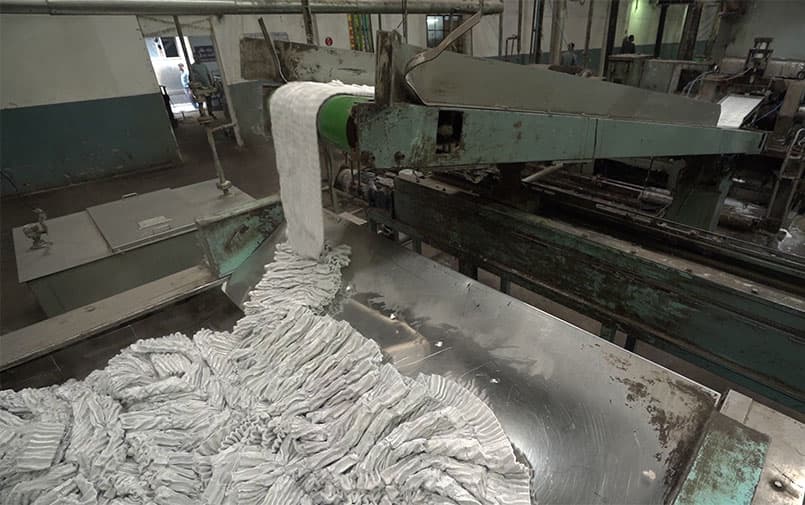
What’s Behind the Shift to Recycled Polyester Staple Fiber (RPSF)?
Recycled polyester staple fiber (RPSF) is gaining momentum because of its sustainability benefits. Made from post-consumer PET bottles, RPSF helps reduce plastic waste while providing manufacturers with a material that is nearly identical in performance to virgin polyester. But it’s not only about reducing waste. RPSF helps companies meet evolving regulatory requirements, such as EPR compliance and sustainability mandates, which are becoming more prevalent around the world.
In India, where the India PET recycling industry is growing, brands are increasingly sourcing RPSF as part of their sustainability strategies. The growing demand for recycled fibers is not just a trend. It’s part of a larger shift toward circularity in the textile sector. RPSF is being recognized as a key component in this transition. Many industries are already incorporating recycled polyester staple fiber into products that were once made exclusively from virgin polyester fiber. This has redefined the role of recycled polyester fibre in India and globally.
RPSF is not just a substitute. It’s a sustainable innovation that meets the growing demands for performance and compliance. The RPSF fibers produced by JB Ecotex, for example, are crafted using advanced processing technologies to ensure the highest quality and purity. This allows us to meet industry standards while maintaining product performance.
Comparing the Performance: RPSF vs Virgin Polyester
When talking about recycled polyester staple fiber, it’s not only about the material itself. It’s about everything that comes with it: the process, the technology, and the environmental impact.
RPSF fibers offer the same durability and strength as virgin polyester fibers. Products made with recycled PSF perform just as well as those made with new virgin polyester staple fiber. The difference is clear. RPSF gives manufacturers a competitive edge in today’s market, where sustainability is a key driver.
Another reason why RPSF is gaining traction is the technology behind it. State-of-the art technologies ensure our recycled polyester staple fiber meets the highest purity standards. The technology guarantees that the fibers are safe, effective, and consistent, keeping us ahead of the curve in the sustainable manufacturing space.
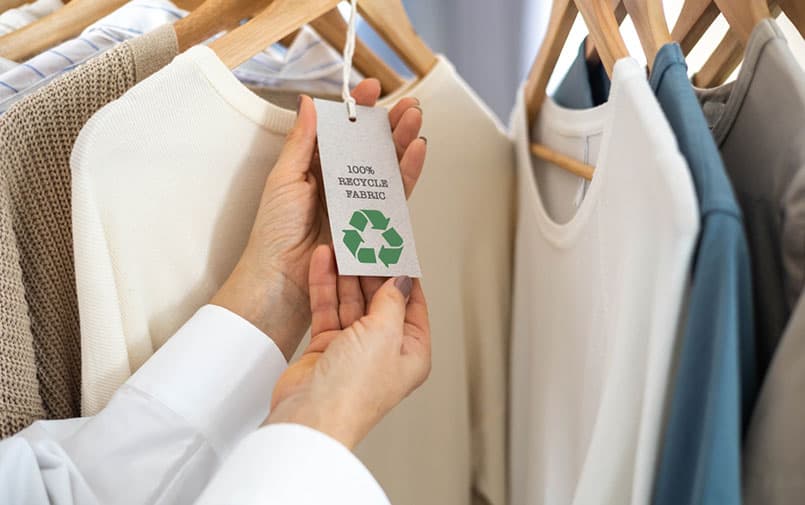
Market Trends and Consumer Demand for Sustainable Packaging and Textiles
In recent years, consumer demand for sustainable textiles has skyrocketed. Millennials and Gen Z consumers, in particular, are leading the charge, prioritizing brands that use eco-friendly materials. According to a study by Packaging Europe, 75% of consumers are willing to pay more for eco-friendly products. This shift in consumer sentiment has pushed textile manufacturers to rethink their materials and processes, with recycled polyester staple fiber emerging as the ideal alternative to virgin polyester.
The Business Impact: Why RPSF is More Than a Trend
Manufacturers aren’t just considering sustainability as a marketing tool. They’re evaluating it from a business standpoint as well. How can they improve their production processes? How can they meet consumer demand for more sustainable materials? And how do they ensure that their products are compliant with increasingly strict regulations?
RPSF can help meet all these demands. It’s not just about having an eco-friendly product. It’s about finding a material that performs just as well as the alternatives, but with environmental responsibility integrated into every step.
More manufacturers are raising the same questions. Is our supply chain sustainable? Can we reduce our dependence on virgin materials? And can we stay compliant with global regulations? The answers are in RPSF. Recycled PSF meets sustainability goals, delivers performance, and provides manufacturers with the consistency they need.
At JB Ecotex, we understand these challenges. That’s why we ensure that our recycled polyester staple fiber isn’t just eco-friendly but also meets the highest performance standards. We offer virgin-like recycled staple fiber, high-tenacity recycled PSF, and other products that help manufacturers meet both their sustainability and performance goals.
The Future of Polyester in Textiles: Innovations on the Horizon
The future of polyester is bright, and it’s increasingly shaped by innovations in recycling. Chemical recycling methods are advancing rapidly, offering even higher quality rPET and making it possible to recycle polyester fibers that were once difficult to process. At JB Ecotex, we are exploring these emerging technologies to improve the purity and performance of our recycled polyester staple fibers. The rise of these technologies opens the door to even more sustainable options for manufacturers seeking to reduce their environmental footprint.
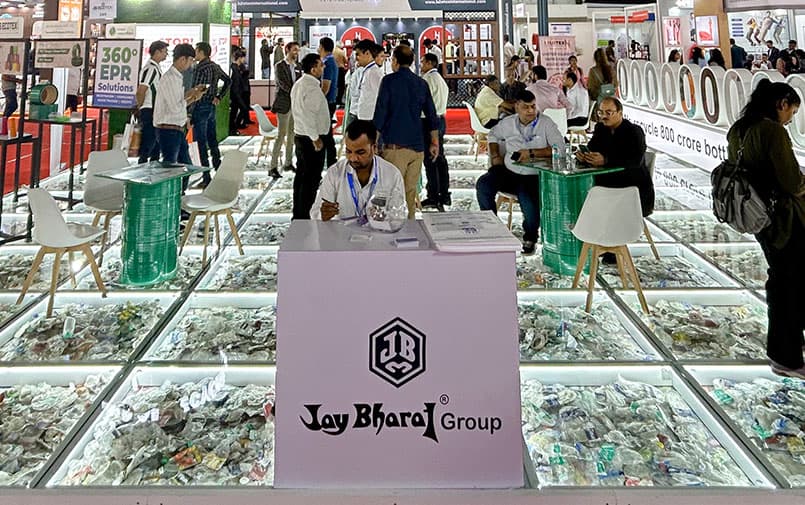
What Stakeholders Should Look for in a Recycled PSF Supplier
When choosing a supplier for recycled PSF, it’s important to consider more than just the price. Look for suppliers who provide full traceability of their materials, ensuring that the product comes from a responsible source. Suppliers who use advanced technologies and necessary certifications guarantee higher purity and compliance with regulations. At JB Ecotex, we pride ourselves on providing quality rPET fibers, giving you the confidence to meet both regulatory standards and sustainability goals.
Our Process: Making RPSF Work for You
The journey from post-consumer PET bottles to recycled polyester staple fiber is not just about collecting plastic. It’s a careful process. At JB Ecotex, we don’t just rely on basic recycling methods. We use advanced technology to ensure that every fiber we produce meets the highest standards of quality and sustainability.
Our process includes:
Collection & Sorting
- Post-consumer PET bottles and industrial polyester waste are collected.
- Waste material is sorted by type, color, and quality.
Cleaning & Washing
- PET bottles and polyester waste undergo thorough cleaning and washing.
- Contaminants, labels, and adhesives are removed.
Shredding into Flakes
- Cleaned material is shredded into small PET flakes.
- These flakes are again washed and dried to ensure purity.
Melting & Extrusion
- PET flakes are melted and formed into pellets or directly extruded.
- High temperatures (around 250-300°C) ensure uniform melting and removal of impurities.
Melt Spinning
- Molten PET material is forced through spinnerets (tiny holes) to form continuous filament fibers.
- Spinneret design controls fiber thickness (denier).
Cooling & Solidification
- Filaments are rapidly cooled, typically by air.
- Solidified filaments form fibers, referred to as tow.
Drawing & Orientation
- Fibers are stretched (drawn) to align polymer molecules, increasing strength.
- Multiple drawing stages may be used to enhance fiber properties.
Crimping & Texturing
- Fibers are mechanically crimped to add bulkiness, elasticity, and softness.
- Crimping enhances insulation properties and improves yarn processing.
Heat Setting
- Fibers undergo heat treatment to set crimp, stabilize dimensions, and enhance durability.
- This step ensures the fibers maintain shape through future processing.
Cutting into Staple Fiber
- Continuous fibers (tow) are precisely cut into shorter lengths known as staple fibers.
- Common lengths range from 32mm to 76mm, tailored to end-use requirements.
Baling & Packaging
- Staple fibers are compressed into bales for efficient handling and transportation.
- Proper labeling and quality checks ensure consistency and traceability.
This meticulous process ensures that RPSF is safe, consistent, and high-performance, making it the ideal choice for manufacturers.
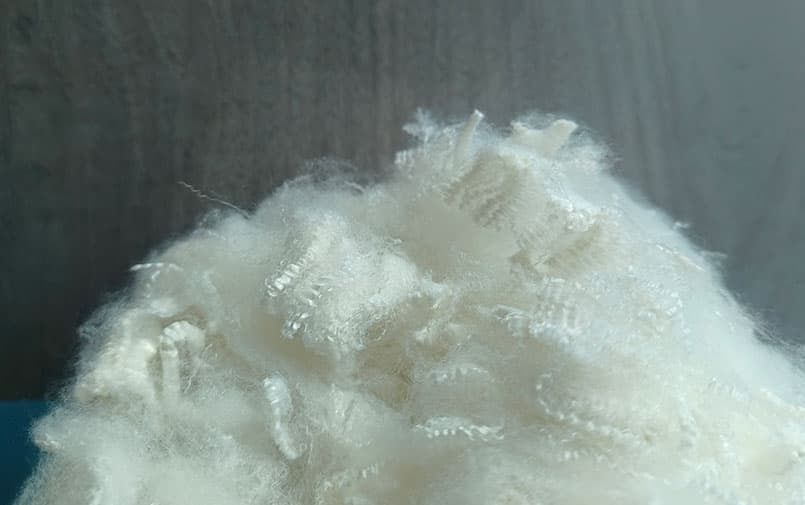
FAQ Section
1. What is RPSF, and why is it important for the textile industry?
RPSF (Recycled Polyester Staple Fiber) is made from recycled PET bottles and offers the same strength and durability as virgin polyester fibers, with the added benefit of being more sustainable.
2. How does JB Ecotex ensure the quality of its RPSF?
We use EREMA Vacunite technology, which ensures that every batch of RPSF meets the highest purity standards, providing you with a reliable and compliant material.
3. Can RPSF be used for high-performance applications?
Yes. Our high-tenacity recycled PSF is designed for demanding applications, offering excellent strength and durability.
4. Is RPSF compliant with global standards?
Yes, we ensure that our RPSF meets both EPR and regulatory requirements, making it suitable for a range of industries, including food-grade packaging.
5. How do I incorporate RPSF into my products?
We offer custom solutions for manufacturers, providing recycled polyester staple fibre in a variety of grades, including dyeable recycled fibre and eco-friendly staple fiber for diverse applications.
Present Scenario In Polyester Textile Market
The debate surrounding virgin polyester staple fibre and recycled polyester staple fiber is no longer just about the materials themselves. It’s about aligning with the future of manufacturing. Virgin polyester still has a place in certain categories, but its dominance is giving way to a more adaptive and circular model. Recycled alternatives, backed by transparency and process accountability, are reshaping how the world defines fiber quality.
JB Ecotex is proud to support this change. If you are a manufacturer aiming to reduce your dependency on virgin materials while staying audit-ready, we’re ready to support your fiber strategy with precision, reliability, and clarity. As global regulations tighten and consumer expectations shift, manufacturers who embrace RPSF will be better positioned to meet the needs of a more sustainable and responsible industry.
At JB Ecotex, we’re committed to producing recycled polyester fibers using the latest technologies, ensuring that our materials meet global standards. We aim to support manufacturers in making the shift to eco-friendly products that perform just as well as virgin polyester but with far less environmental impact.
Ready to make the shift to more sustainable textiles?
Explore our RPSF products today.
